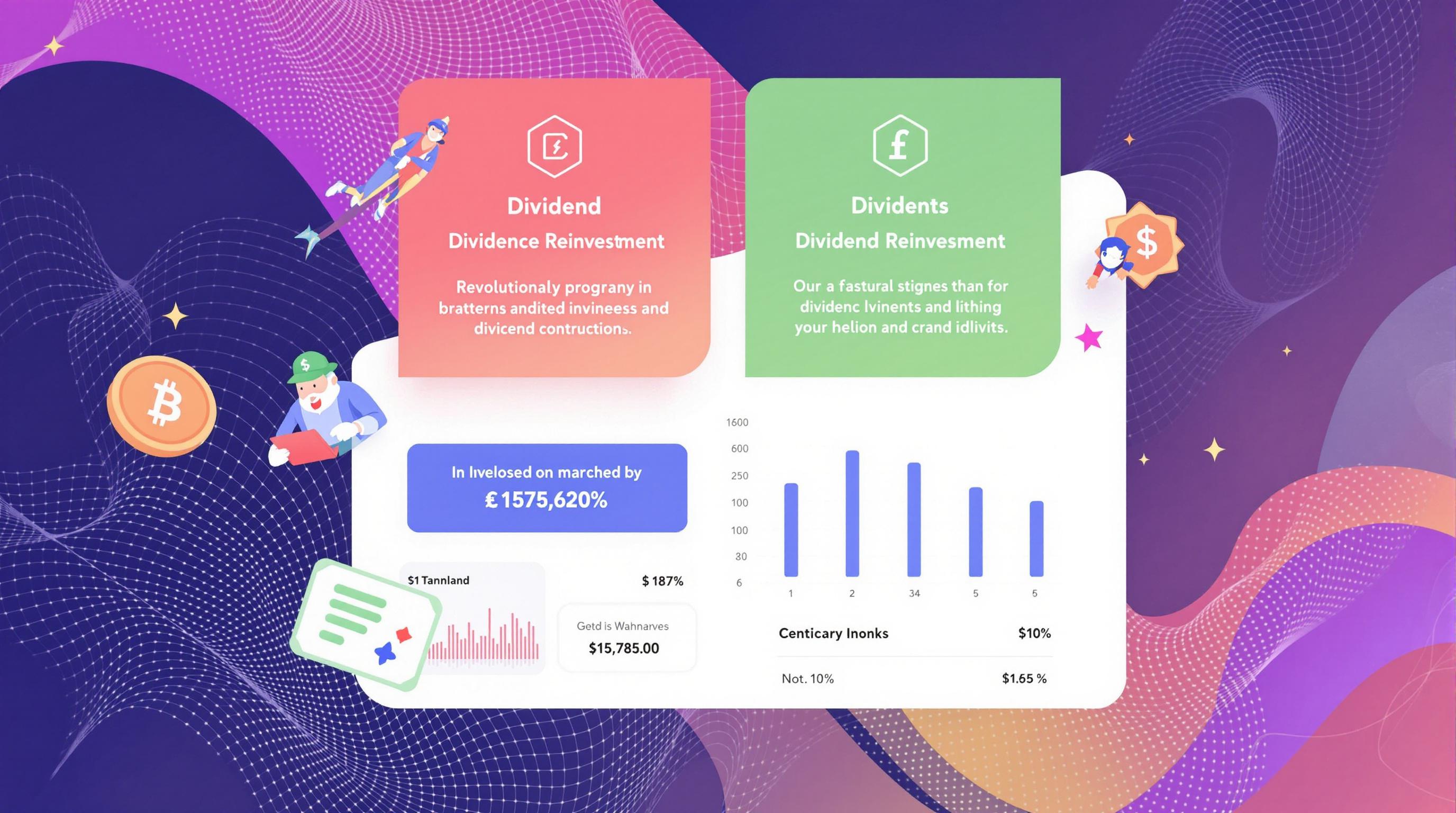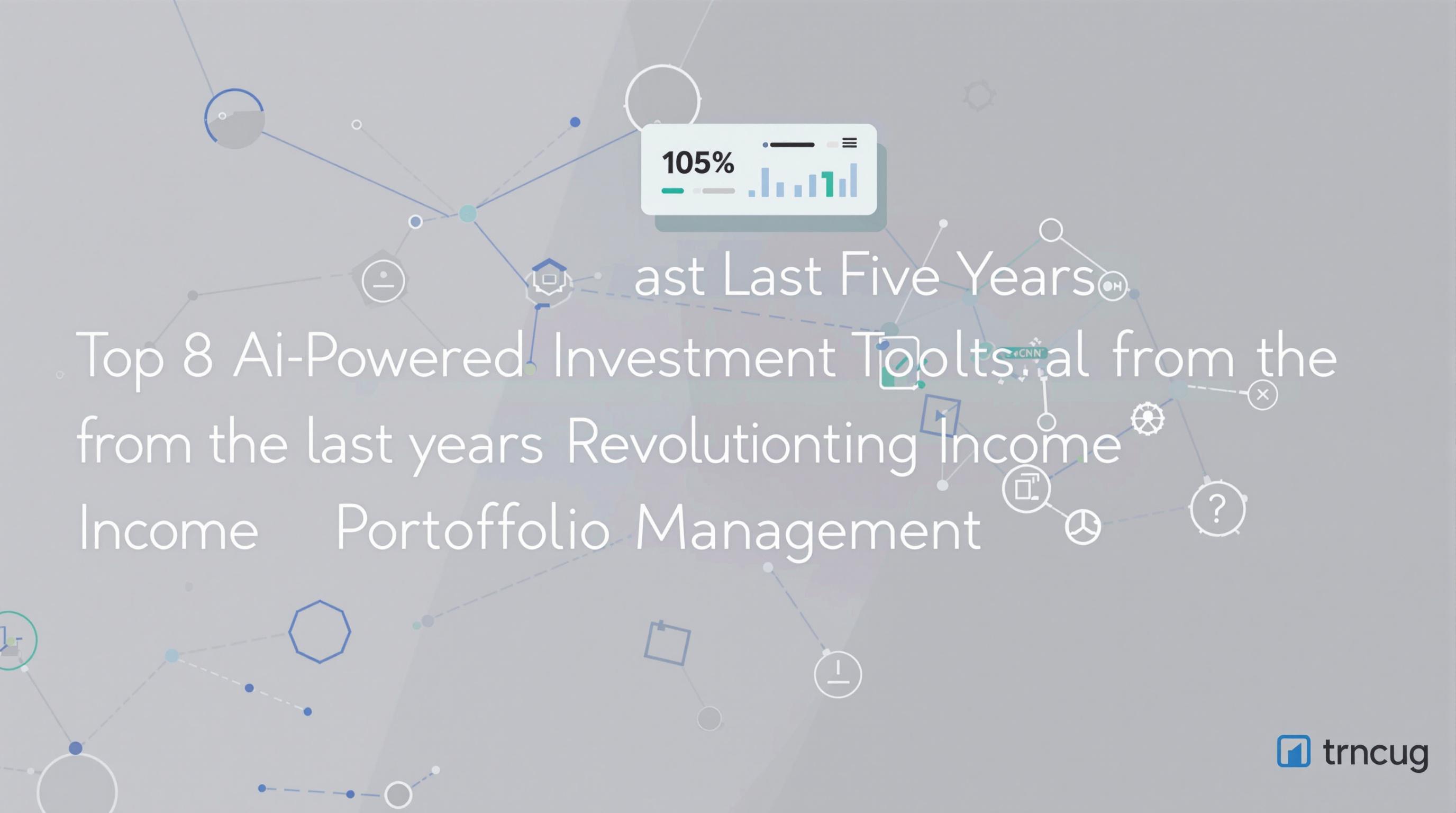Related Articles
- Top 6 Quantitative Hedge Funds Launched Since 2019 That Challenge Traditional Diversification Models
- Top 8 Cutting-Edge Retirement Income Vehicles From the Last Five Years Revolutionizing Financial Freedom
- Uncovering the Role of Behavioral Biases in Roth Conversion Decisions and Their Impact on Long-Term Wealth
- Top 6 Revolutionary Dividend Reinvestment Platforms Launched Since 2019 Redefining Passive Income Growth
- Top 7 Breakthrough Retirement Income Platforms Launched in the Last Five Years Compared and Ranked
- The Untold Influence of Cultural Artifacts on Expanding Investment Horizons and Mitigating Financial Risks
5 Clever Stock Dividend Strategies to Maximize Tax Efficiency and Compounded Returns Over Time
5 Clever Stock Dividend Strategies to Maximize Tax Efficiency and Compounded Returns Over Time
5 Clever Stock Dividend Strategies to Maximize Tax Efficiency and Compounded Returns Over Time
Introduction to Dividend Investing
Dividend investing has long been a favored strategy for building wealth through a combination of capital appreciation and income generation. By investing in stocks that pay regular dividends, investors can create a reliable stream of income while benefiting from potential stock price gains. However, the true power of dividend investing lies in harnessing tax efficiency and the magic of compounding returns over time.
Taxation on dividends can vary widely depending on the type of dividend and an investor’s tax bracket, which directly affects net returns. Understanding how to strategically manage dividend income can significantly boost long-term wealth accumulation. Moreover, reinvesting dividends allows investors to purchase more shares, creating a snowball effect that enhances portfolio growth exponentially.
This article explores five clever strategies that investors can use to maximize their tax efficiency and compound their returns effectively through dividend investing. These strategies are designed to help you grow your portfolio smarter, not just bigger, inspired by best practices highlighted in investment research and tax guidelines.
1. Focus on Qualified Dividends
One of the simplest ways to enhance tax efficiency in dividend investing is to prioritize stocks that pay qualified dividends. Qualified dividends are dividends paid by U.S. corporations or qualified foreign corporations that meet specific IRS holding period requirements. These dividends are taxed at the favorable long-term capital gains tax rates instead of ordinary income rates.
Tax rates on qualified dividends range from 0% to 20% depending on your income level, which is generally lower than ordinary income tax rates that could be as high as 37%. This difference can result in substantial tax savings, especially for investors in higher tax brackets. Ensure that you hold the stock for more than 60 days during the 121-day period around the ex-dividend date to qualify for the preferred treatment.
By assembling a portfolio with a focus on qualified dividend payers, you can reduce the drag of taxes on your dividend income, preserving more capital to reinvest and compound. According to IRS guidelines and investment tax planning experts, paying attention to dividend qualification is a foundational step in tax-efficient dividend investing.
2. Utilize Tax-Advantaged Accounts
Investing within tax-advantaged accounts such as IRAs, Roth IRAs, and 401(k)s can significantly boost the tax efficiency of dividend returns. These accounts offer tax deferral or even tax exemption, allowing dividends to grow and compound without immediate tax liabilities.
For example, dividends earned in a traditional IRA are not taxed until withdrawals are made, allowing reinvestment of the full dividend amount without tax interference. In a Roth IRA, qualified withdrawals are entirely tax-free, meaning both dividends and their compounded gains can be withdrawn without any tax burden after meeting certain age and holding period requirements.
By maximizing contributions to these accounts and focusing dividend-paying stocks within them, investors can shield dividend income from yearly taxation. As a result, this strategy can lead to more efficient compounding over time and smoother retirement income planning. Vanguard and other financial research institutions advocate this approach to enhance tax efficiency in dividend strategies.
3. Harvest Tax Losses to Offset Dividend Income
Tax-loss harvesting is a clever tactic where investors sell securities at a loss to offset taxable gains and dividend income. This approach can effectively reduce your overall tax liability and improve after-tax returns. By pairing dividend income with strategically realized losses, you can temper the tax impact of dividends.
For dividend-paying stocks, if prices fall below the purchase price, selling at a loss can produce capital losses. These losses can first offset capital gains, and if losses exceed gains, up to $3,000 of excess losses can reduce ordinary income, including dividend income, per tax year. Losses beyond that can be carried forward to future years, providing ongoing tax benefits.
While implementing tax-loss harvesting, be mindful of the wash-sale rule, which disallows the deduction if you repurchase the same or a substantially identical stock within 30 days. Maintaining an attentive tax-loss harvesting discipline has been validated by financial planners as an effective tool to boost after-tax returns in dividend portfolios over time.
4. Optimize Your Dividend Reinvestment Strategy
Reinvesting dividends is crucial for compounding returns, but doing so thoughtfully can increase tax efficiency. Automatic Dividend Reinvestment Plans (DRIPs) allow investors to purchase additional shares of the dividend-paying stock without incurring additional commissions. This continual reinvestment maximizes growth by leveraging the power of compounding.
However, be cautious with DRIPs in taxable accounts because each reinvestment is considered a new purchase that must be tracked for cost basis and holding period. Detailed record-keeping is essential to accurately calculate gains and dividends qualified for preferential tax treatment when the shares are sold.
Alternatively, some investors may choose to take dividends as cash and reinvest selectively in stocks that align with their tax strategy and risk tolerance. According to the CFA Institute, reinvestment—whether automatic or manual—accelerates portfolio growth, and disciplined reinvestment combined with tax-aware strategies enhances overall investment efficiency.
5. Consider Dividend Growth Stocks for Inflation Protection
Dividend growth investing involves selecting companies with a track record of consistently increasing their dividend payouts year over year. This strategy helps protect investors from inflation erosion, as growing dividends can maintain or increase purchasing power over time. Compounded dividend increases contribute to escalating income streams.
From a tax perspective, although growing dividends imply potentially increasing taxable income, many dividend growth stocks pay qualified dividends, allowing investors to benefit from lower tax rates consistently. Moreover, investors can time their sales and withdrawals to minimize tax implications, leveraging long-term capital gains rates as applicable.
Research from Morningstar highlights that dividend growth strategies not only provide rising income but also tend to coincide with financially stable companies with strong cash flows. These factors increase the likelihood of sustainable dividends and capital appreciation, contributing to more robust compounded total returns over the long term.
6. Diversify Across Tax Jurisdictions
Investing in dividend-paying stocks from various countries can add diversification benefits and potential tax advantages. Some foreign dividends may be subject to withholding taxes by the source country, but U.S. investors can often claim a foreign tax credit against their U.S. tax liability to offset this double taxation.
Careful selection of international dividend stocks in countries with favorable tax treaties can reduce the impact of withholding taxes. Additionally, dividends from certain countries might be qualified for lower tax rates if holding period criteria are met. Diversifying internationally also spreads economic and political risk, which can strengthen the stability of your dividend streams.
According to IRS Publication 514 and investment research, understanding and managing foreign dividend tax rules can enhance after-tax returns when diversifying globally. Consultation with tax professionals is advisable for navigating complex cross-border tax considerations effectively.
7. Utilize Tax-Efficient Funds and ETFs
Dividend-focused mutual funds and Exchange-Traded Funds (ETFs) can offer a convenient way to access diversified dividend income streams. However, the tax efficiency of these funds varies considerably based on their management style and distribution practices.
Index-based dividend ETFs often have lower turnover and distribute fewer capital gains, leading to reduced tax liabilities compared to actively managed funds. Additionally, some ETFs focus explicitly on qualified dividends, further enhancing tax efficiency. Holding such funds within taxable accounts benefits from their structure, minimizing annual tax bills on dividends and gains.
Industry data from Morningstar confirms that choosing tax-efficient dividend ETFs or funds improves after-tax returns and simplifies tax reporting. This strategy is especially beneficial for investors who prefer a hands-off approach but still want to optimize tax outcomes from dividend income.
8. Time Dividend Income with Your Tax Bracket
Tax planning around dividend income includes managing the timing of dividend receipt relative to your income and tax bracket. Since dividend tax rates are linked to overall taxable income, strategizing when to realize dividend income can reduce tax burdens.
For example, deferring income or realizing dividend payments in years of lower taxable income—such as early retirement or after financial setbacks—can result in lower tax rates on dividends. Conversely, avoiding large dividend yields in high-income years can minimize tax impacts.
Tax-efficient investors often coordinate dividend harvesting with other income sources to keep taxable income within brackets that maximize qualified dividend tax benefits. Tax advisors and financial planning resources recommend this timing strategy as a way to preserve more wealth over the investment horizon.
9. Leverage Tax-Deferred Growth for Non-Dividend Stocks
While dividend stocks generate income regularly, some investors prefer to focus on tax-deferred growth by investing in non-dividend or low-dividend growth stocks inside tax-advantaged accounts. This strategy complements dividend investing by balancing immediate income with long-term tax efficiency.
By minimizing dividend income within taxable accounts and favoring growth stocks, investors defer taxes until capital gains realization. They may then reinvest dividends in tax-advantaged accounts and allow non-dividend stocks to grow unhindered by current taxation. This separation enhances compound growth efficiency across portfolio segments.
Balanced portfolios combining dividend and growth stocks with appropriate tax treatment across accounts can leverage the best of both worlds. Studies by Fidelity and other investment firms support this integrated approach for maximizing after-tax returns through strategic asset location and stock selection.
10. Consult a Professional for Personalized Tax Planning
Dividend tax laws can be complex and frequently change due to shifts in tax policy. While general strategies provide a strong foundation, personalized tax planning with a certified financial planner or tax advisor is critical. They can tailor strategies to your specific financial situation, goals, and jurisdiction.
Professionals can also help navigate advanced considerations such as Alternative Minimum Tax (AMT) impacts, state-level taxes on dividends, and evolving IRS regulations that affect dividend classifications. Proactive consultation can avoid costly mistakes and identify new opportunities for tax savings.
Resources such as the IRS website, financial advisor insights, and certified tax professionals remain invaluable for optimizing dividend strategies. Combining expert advice with disciplined investing ensures that your dividend income works maximally for your long-term wealth accumulation goals.
References
1. Internal Revenue Service (IRS) Publication 17 and Publication 514 – Tax Guide for Individuals and International Tax Information.
2. Morningstar, “Dividend Growth Investing Strategies.”
3. Vanguard, “Tax-Efficient Investing and Dividend Strategies,” 2023.
4. CFA Institute, “Tax Efficient Investing Insights.”
5. Fidelity Investments, “Balancing Growth and Income in Taxable Accounts,” 2023.




